11 cool Apple gadgets that time forgot
6. Netbooks
Name: Apple eMate 300
Price: $800 (£316)
Description: Ultraportable laptop/netbook
When: 1997-1998
Modern equivalent: 11-inch MacBook Air
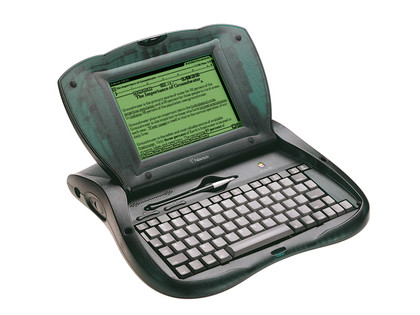
Designed as a tough, compact 'computer' for schools, the 1997 eMate 300 is arguably the ancestor of the netbook PC and MacBook Air, but was got rid of by Steve Jobs just one year into its lifespan. The eMate 300's big standout feature is its innovative industrial design, which includes a curvy 'clamshell' body, carrying handle and the use of translucent plastics.
Although the stock model only came in one colour – aquamarine – several prototypes were also produced in red, orange, red, purple and clear plastic. Often credited to Jonathan Ive, the eMate 300 was actually designed by Thomas Meyerhoffer who was allowed to go 'hogwild' by Apple executives (Businessweek, 1997).
However, the eMate's legacy survived its untimely demise – its design clearly influenced the original iBook, which arrived in 1999.
7. PDAs
Name: Apple Newton MessagePad
Price: unknown
Description: Pen-based personal digital assistant (PDA)
When: 1993-1998
Modern equivalent: Ink handwriting recognition software, iPhone, iPad, iPod touch
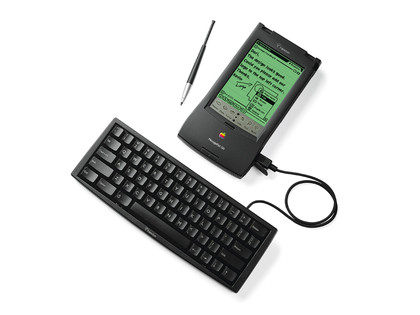
Before the iPad, the iPhone, iPod touch, even before the Palm Pilot there was this: the world's first touchscreen PDA. First launched by Apple in 1993, the Newton MessagePad was in many ways ahead of its time.
It introduced the idea of using a touch-sensitive screen and stylus to consumer devices and even included handwriting recognition, although it didn't work that well at first. The original Newton MessagePad didn't even include a way to sync the device with a Mac or PC.
Sign up for breaking news, reviews, opinion, top tech deals, and more.
Luckily things steadily improved with each new iteration, while the Newton operating system included features that are now familiar to us, such as a popup on-screen keyboard. Although it was eventually banished by Steve Jobs in 1998, the Newton MessagePad still has its fans. Smart, tough and beautiful, it arguably inspired the templates for the iOS devices and smartphones that we use today.
8. Portable CD players
Name: Apple PowerCD
Price: $499 (£316)
Description: Portable CD-ROM drive
When: 1993-1997
Modern equivalent: iPod
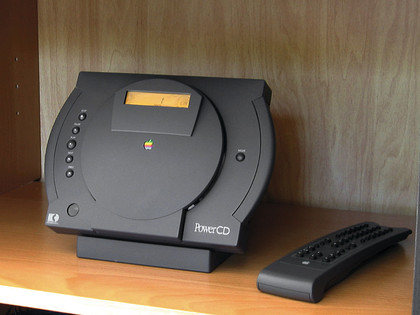
When Apple dropped the word 'Computer' from its name in 2007, it finally fulfilled an ambition it had been working towards for years. It wanted to grow beyond its computing origins and become a consumer electronics company, hence devices like the QuickTake digital camera and this, the PowerCD.
Dreamed up by short-lived Apple design group Mac Like Things, the PowerCD was actually one of Apple's more successful attempts, remaining in Apple's line-up from 1993 to 1997. It chiefly served as an external CD-ROM for the optical drive-less PowerBooks of the time, but could also be used as a portable music player by slotting batteries into its base and teaming it with a pair of AppleDesign Powered Speakers.
It was also compatible with Kodak photo CDs, images from which could be viewed on the Mac using the PowerCD's built-in SCSI connector or on a TV using its video output. Although the PowerCD's slick design was Apple's own, the mechanics inside weren't: Philips, co-creator of CD technology alongside Sony, made them.
9. Digital cameras
Name: Apple QuickTake
Price: $749 (£474)
Description: Digital compact camera
When: 1994-1997
Modern equivalent: Digital camera in iPhone, iPod touch and iPad
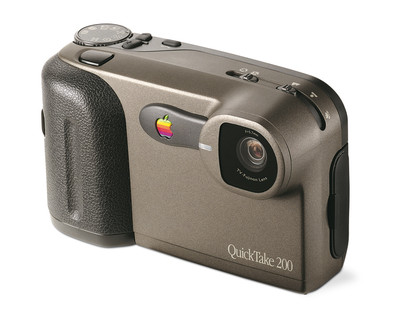
We may take digital photos for granted today, but back in the 90s, the technology was a frontier town full of all kinds of exciting possibilities – and Apple was at the very forefront. It became the first company to launch a consumer digital camera in the US in 1994 with the QuickTake 100.
Built by Kodak, the binocular-style camera had a fixed lens and could store up to eight VGA-resolution images at a time on its 1MB of internal memory, with photos transferred to the Mac using a serial cable. The QuickTake 100 was followed by another Kodak-made model – the QuickTake 150 – and then the Fujifilm-made QuickTake 200 (pictured) but none of the cameras sold well, chiefly thanks to Apple's lack of photography heritage and stiff competition.
Again, Steve Jobs canned the cameras when he returned to Apple in 1997.
10. Portable phones
Name: W.A.L.T. (codename)
Price: Not applicable (prototype)
Description: pen-based portable communication tablet
When: 1990-1993
Modern equivalent: iPhone, iPad
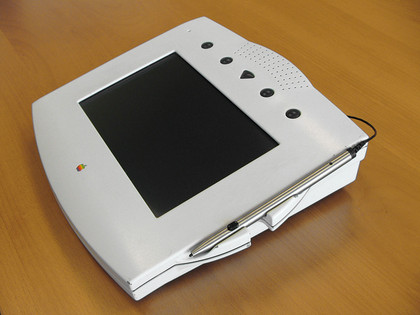
If Apple had launched the iPhone in 1990 instead of 2007, this is what it might have looked like. The W.A.L.T. – or Wizzy Active Lifestyle Telephone – was a portable communications tablet jointly developed by Apple and US phone network BellSouth.
Key features include a touch-sensitive screen with stylus input, handwriting recognition and a built-in address book, message pad and fax machine. Sadly, the W.A.L.T. project was not to be. It mysteriously ground to a halt in 1993.
11. All-in-ones
Name: Paladin (codename)
Price: Not applicable (prototype)
Description: All-in-one computer, scanner, fax machine and phone
When: 1993
Modern equivalent: Unknown
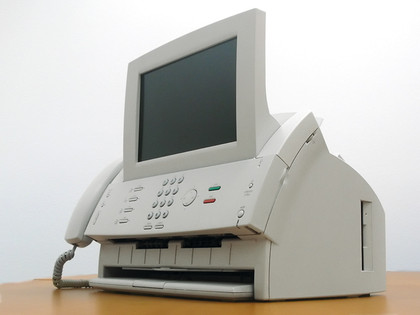
This was another attempt to marry computers with the world of telephone communications. This time the gadget appeared in the shape of an all-in-one Mac, phone, scanner and fax machine aimed at small businesses.
The whole thing was controlled by an application called Complete Office, which enabled easy switching between its various modes.
--------------------------------------------------------------------------------------------------
First published in MacFormat Issue 242
Liked this? Then check out Apple in 2012: 10 things to expect
Sign up for TechRadar's free Week in Tech newsletter
Get the top stories of the week, plus the most popular reviews delivered straight to your inbox. Sign up athttp://www.techradar.com/register
Follow TechRadar on Twitter*Find us on Facebook*Add us on Google+